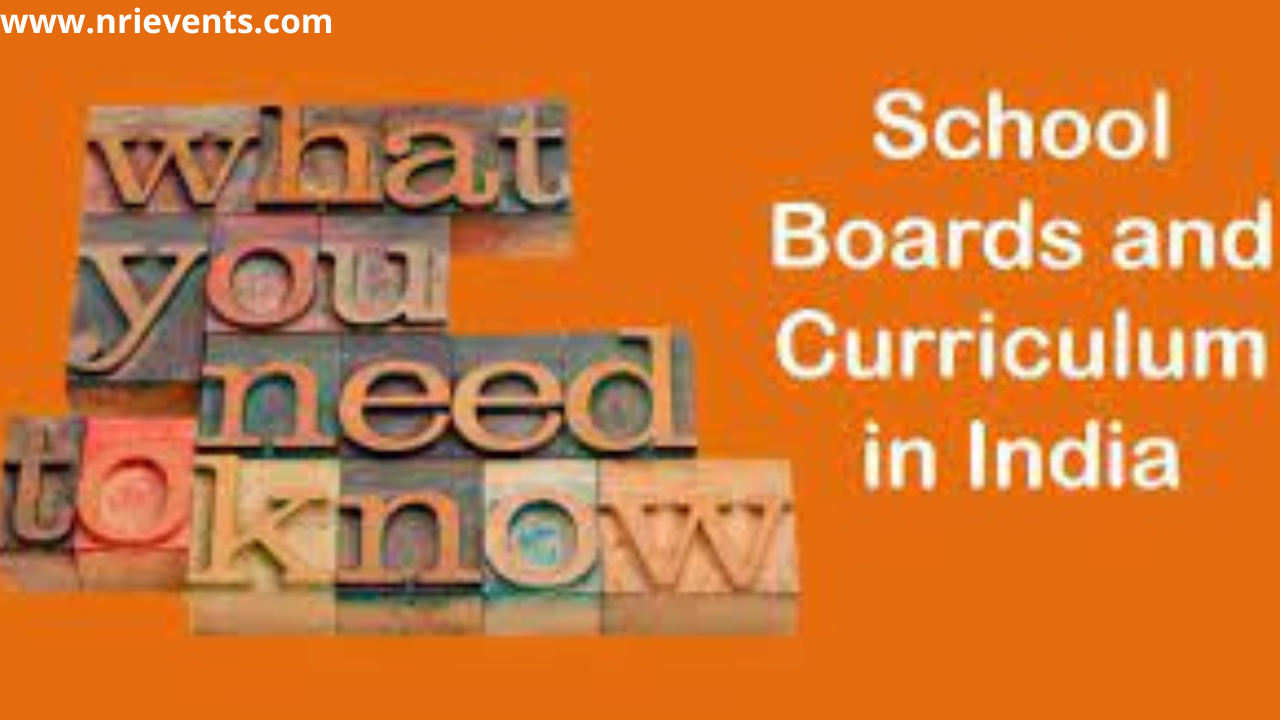Curricular in Indian Schools

Curriculum in Indian schools | Indian school curriculum- types and stages in education.
A curriculum is a framework for what students will learn each year they’re at school. An activity-based curriculum is compromised around active learning and presenting information to your students in an interactive and fun way.
Know more about the curriculum in Indian schools through this article.
Introduction: The focus of an activity-based curriculum is teaching skills and knowledge to your students through creative tasks and activities.
Here are the different types of curricula in Indian schools:
- Activity-based curriculum:
In an activity-based curriculum, the subject matter is summarised in terms of fun activities, and knowledge is gained as an outgrowth of those activities. The child acquires immense knowledge, skill and attitudes through different activities.
Nature and Characteristics:
(i) Learning through a fun activity is more enduring than through a theoretical discussion.
(ii) Activity-based learning has occupied a central position in the curriculum of advanced countries.
(iii) In this particular curriculum, the requirement is made for a series of activities in schools suitable to various subjects.
(iv) The school becomes a workshop or a center of work for organizing different activities.
(v) The spirit of project and teamwork, experiment, and discovery should persist in the school.
Advantages of Activity Curriculum:
The advantages of an activity curriculum are as follows:
(i) Education or learning becomes meaningful when the learner or student finds activities according to his 0+0interest and attitude.
(ii) This type of curriculum promotes teamwork and cooperative activities.
(iii) It promotes physical fitness, emotional satisfaction, alertness, and initiative.
(iv) Activity curriculum promotes school-community relationships.
(v) The teacher becomes more imaginative and resourceful.
(vi) It eases the development of values like social, moral, and democratic values through activities and project works.
(vii) This curriculum can bridge the gap between work and education style, work and life, school and society, etc.
- Child-centered Curriculum:
In a child-centered curriculum, the child occupies a pivotal position. That is why, modern education is popularly known as “Paedocentric” or child-centered education, particularly at the primary stage.
Characteristics of Child-Centered Curriculum:
Some of the characteristics of a Child-centred curriculum:
(i) In this curriculum the teacher gives more emphasis on the child rather than the subject, he plans to teach.
(ii) Priority is given to the child’s abilities,/interests, growth, and development.
(iii) The child’s experiences and feedback are taken as the basis of teaching and tools for various curricular and co-curricular activities.
(iv) The child has to grow on his own by leaps and bounds, but the teacher is to guide and motivate him.
Advantages:
The following are the advantages of a child-centered curriculum:
- A child-centered curriculum stresses more on the problem of the children rather than the subject matter.
- There are high chances for active participation of the child in the learning process.
- Play way approach is a unique approach that helps the child to learn naturally.
- Core Curriculum:
The core curriculum includes all the required content areas in the school/high school program. The term ‘core’ refers to different types of courses such as united studies, common learning, general education, social living, and integrated program. A curriculum that is based on essential learning and a common scheme of studies is known as a core curriculum. And it is centered around certain essential learning outcomes common for all learners.
Characteristics of Core Curriculum:
Some of the characteristics of the core curriculum:
(i) It requires a higher degree of flexibility concerning the content.
(ii) It uses the problems of personal and social development which are related to all youth.
(iii) It inculcates the use of the problem-solving technique to face different problems.
Education in India follows a uniform structure of school education which is known as the 10+2 system. This particular system is being followed by all Indian States and Union Territories.
- Pre Primary Stage: Pre-primary education in India is provided to children of age group 3–6 years by Kindergarten, Playway, or Play Schools. These schools have variable terminology for different levels of classes, beginning from – Pre-Nursery, Nursery, KG, LKG (Lower Kindergarten), and UKG (Upper Kindergarten). Most of the pre-primary school education in India is provided by private schools.
- The Primary Stage: Primary education offered by both private and government schools in India usually consists of students who are aged between 5 to 12 years. The duration of study is 4-5 years. Some of the common subjects include English, Hindi, Mathematics, Environmental Science Hindi, Mathematics, and General Knowledge. It is also termed Elementary Education and is free in government schools but it is paid for in private schools.
3) The Middle Stage: Middle stage of education covering 3-4 years of academic study is formed by the 5th-8thclass consisting of students aged between 12 to 14 years.
The schools which provide education till 8th class are known with various names like – High School, Senior School. Some of the states/UTs which follow the 5th -7th class are Assam, Goa, Gujarat, Karnataka, Kerala, Goa, Gujarat, Karnataka, Dadra & Nagar Haveli, Daman & Diu, Lakshadweep etc.
Some of the states/UTs which follow the 6th -8th class of the middle stage are Arunachal Pradesh, Haryana, Madhya Pradesh, Punjab, Andaman & Nicobar Islands, Chandigarh, Delhi etc.
4) The Secondary Stage: Secondary Stage of education covers 2-3 years of academic education starting with classes 8th-10th and consists of students aged between 14-16 years. These schools are known as Secondary Schools, High Schools, Senior Schools etc.
Some of the states/UTs which follow the 8th -10th class of secondary stage are Goa, Gujarat, Karnataka, Kerala, Dadra & Nagar Haveli, Daman & Diu, Lakshadweep etc. Some of the states/UTs which follow the 9th -10th class of secondary stage are Punjab, Rajasthan, Sikkim, Tamil Nadu, Andaman & Nicobar Islands, and Chandigarh, Delhi, Karaikal region of Pondicherry, etc.
5) Senior Secondary Stage: This education in India is of only 2 years. There is uniformity in this level of schooling both in terms of duration and classes i.e. all the States/UTs follow this as a 10+2 pattern. These Schools in India include classes 11th to 12th and consist of students aged between 16-18 years. At this level of education, students have the freedom to choose their preferred stream and subjects.
Students can pursue Arts, Commerce, and Science (medical & non-medical). The schools which provide education up to the 12th class are commonly known as Senior Secondary Schools or Higher Secondary Schools.
6) Undergraduate Stage: This education in India is for 3-4 years. The undergraduate stage of education is also known as higher education in India. Students studying at this level, generally begin their education from 18 onwards. As per one estimate, 88% of undergraduate education is provided by Colleges in India.
The majority of the undergraduate courses of 3 years duration belong to the field of arts, humanities, science, etc. The 4 years of duration belong to the field of agriculture, engineering, and pharmaceutical sciences and technology. However, there are courses belonging to fields of architecture, law, and medicine whose duration is 5 years.
7) Postgraduate Stage: Postgraduate education in India is for 2-3 years. Postgraduate stages of courses are known as Master’s courses or Doctorate courses. Masters courses are usually of 2 years duration and doctorate (research) courses are of 3 years duration. Also referred to as higher education, 56% of post-graduate education is imparted through colleges.
Adult Education in India: This education in India comes under the Department of School Education and Literacy. The Bureau of Adult Education and National Literacy Mission under the Department serves as the Secretariat of the National Literacy Mission Authority (NLMA). This mission was set up on 5th May 1988 to impart a new sense of seriousness to adult education. The Directorate of Adult Education provides necessary technical and resource support to the NLMA.
Distance Education in India: Distance education provided by institutes is controlled by the Distance Education Council of India. Distance education is helpful to those who cannot join regular schools or colleges. At the school level, the National Institute of Open Schooling offers education through distance learning.


